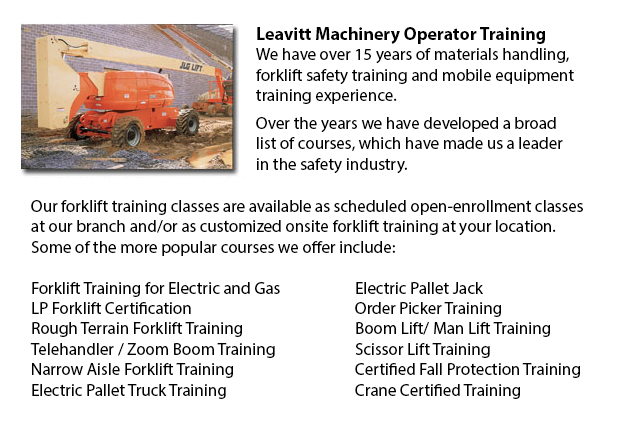
Aerial Lift Safety Training Avondale - Every year, there are approximately 26 construction fatalities attributed to the utilization of aerial lifts. Nearly all of the craftsmen killed are electrical workers, laborers, ironworkers, carpenters or painters. The majority of the fatalities are caused by electrocutions, falls and tip-overs. The greatest danger is from boom-supported lifts, like for instance cherry pickers and bucket trucks. Nearly all fatalities are connected to this particular kind of lift, with the rest involving scissor lifts. Other dangers consist of being struck by falling things, being thrown out of a bucket, and being caught between the guardrail or lift bucket and a thing, such as a joist or steel beam.
In order to safely operate an aerial lift, carry out a check on the following things before making use of the device: emergency and operating controls, safety devices (such as, outriggers and guardrails), personal fall protection gear, and wheels and tires. Check for possible leaks in the air, hydraulic fluid and fuel-system. Check the device for missing or loose components.
The area where the device would be used must be thoroughly inspected for possible hazards, like for instance bumps, holes, debris and drop-offs. Overhead power lines should be avoided or closely monitored. It is suggested that aerial lift devices be used on surfaces which are stable and level. Don't work on steep slopes which exceed slope limits specified by the manufacturer. Even on a slope that is level, wheel chocks, outriggers and brakes should be set.
Employers are needed to provide aerial lift operators and maintenance mechanics with the proper instruction manuals. Mechanics and operators should be trained by a qualified individual experienced with the relevant aerial lift model.
Aerial Lift Safety Guidelines:
o Prior to operating, close lift platform chains and doors.
o Leaning over and climbing on guardrails is prohibited. Stand on the platform or floor of the bucket.
o Use the provided manufacturer's load-capacity limits.
o Make use of work-zone warnings, such as cones and signs, when working near traffic.
Electrocutions are avoidable if safety procedures are followed. Stay well away from power lines - at least 10 feet. Skilled electrical workers should insulate and/or de-energize power lines. Those working have to use personal protective tools and equipment, such as a bucket that is insulated. Nevertheless, a bucket that is insulated does not protect from electrocution if, for instance, the person working touches another wire providing a path to the ground.
Falls are preventable if the person working remains secure in guardrails or in the bucket by making use of a positioning device or a full-body harness. If there is an anchorage inside the bucket, a positioning belt together with a short lanyard is adequate.
Tip-overs are preventable by following the manufacturer's directions. Unless the manufacturer specifies otherwise, never drive whilst the lift platform is elevated. Follow the vertical and horizontal reach limits of the device, and never go beyond the specified load-capacity.
-
Forklift Certification Courses Avondale
Forklift Certification Courses Avondale - Forklift certification courses really help to be able to make sure that companies using forklifts, follow the local and regional rules. The drivers of the forklift need to go through forklift certification pr... More -
Manlift Certification Avondale
Manlift Certification Avondale - The Elevated Platforms and Manlifts Certification course helps to provide the required training on the work practices, safe operating procedures, rules and regulations regarding the daily activities for the operators... More -
Manlift Operator Training Avondale
Manlift Operator Training Avondale - The aerial lift or manlift is a specialized type of hydraulic platform that is intended to hoist a person vertically giving it an alternate name of a vertical personnel lift. These machinery are widely used for a... More -
Telescopic Training Avondale
Telescopic Training Avondale - Telescopic Handlers are a type of forklift, normally called telehandlers. This machine has been increasing in popularity because of its greater lift heights and its versatility. It is often preferred over the convention... More -
Heavy Equipment Training Avondale
Heavy Equipment Training Avondale - The two most common types of heavy equipment training are classed into the categories of equipment; equipment that is fashioned with rubber tires or those with tracks. The tracked vehicle are heavy duty equipment l... More -
Aerial Lift Train the Trainer Avondale
Aerial Lift Train the Trainer Avondale - The Aerial Lifts Train the Trainer Certification Program would teach trainers how to efficiently train operators in safe industrial mobile equipment operation. Trainers are provided with in-depth instruction a... More -
Overhead Crane Safety Training Avondale
Overhead Crane Safety Training Avondale - The overhead crane safety training program is meant to equip the operators with the right knowledge and skills in the areas of: crane safety measures, accident avoidance, materials handling, and stock and equ... More -
Heavy Equipment Training Schools Avondale
Heavy Equipment Training Schools Avondale - When choosing an operator training course, there are numerous heavy equipment training schools to select from. In order to ascertain the qualifications you would attain, it is very important to check some a... More

Forklift Training Avondale
TOLL FREE: 1-888-254-6157
Avondale, Arizona
forkliftcertificationavondale.com
Email Us
About Us


